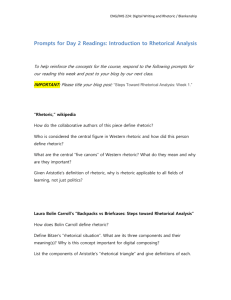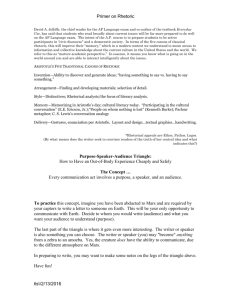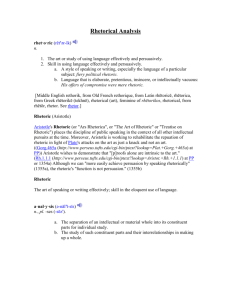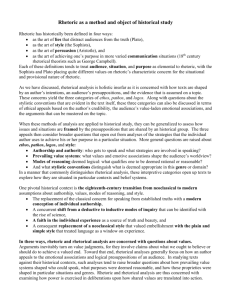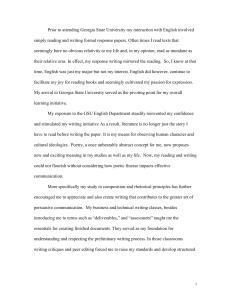Julia Rhetorical Analysis
advertisement
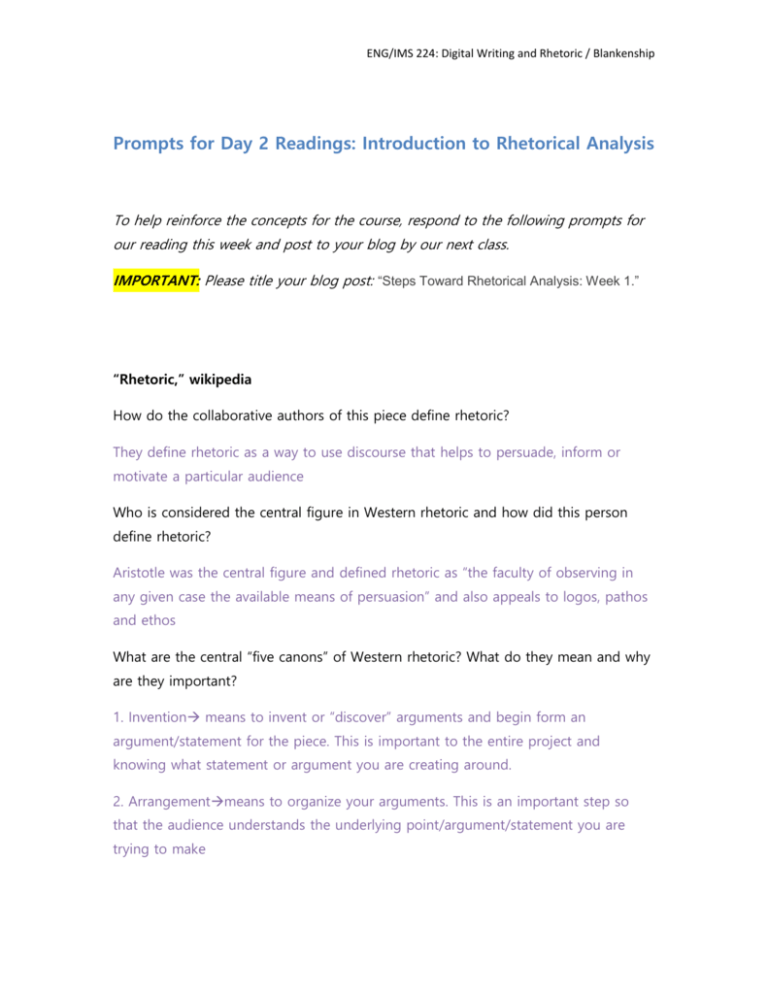
ENG/IMS 224: Digital Writing and Rhetoric / Blankenship Prompts for Day 2 Readings: Introduction to Rhetorical Analysis To help reinforce the concepts for the course, respond to the following prompts for our reading this week and post to your blog by our next class. IMPORTANT: Please title your blog post: “Steps Toward Rhetorical Analysis: Week 1.” “Rhetoric,” wikipedia How do the collaborative authors of this piece define rhetoric? They define rhetoric as a way to use discourse that helps to persuade, inform or motivate a particular audience Who is considered the central figure in Western rhetoric and how did this person define rhetoric? Aristotle was the central figure and defined rhetoric as “the faculty of observing in any given case the available means of persuasion” and also appeals to logos, pathos and ethos What are the central “five canons” of Western rhetoric? What do they mean and why are they important? 1. Invention means to invent or “discover” arguments and begin form an argument/statement for the piece. This is important to the entire project and knowing what statement or argument you are creating around. 2. Arrangementmeans to organize your arguments. This is an important step so that the audience understands the underlying point/argument/statement you are trying to make ENG/IMS 224: Digital Writing and Rhetoric / Blankenship 3. Style means to choose the rights words to effectively deliver the information so that the right tone is used. This is important to avoid confusion in the audience and to make sure that people receive information the way they are intended to 4. Memory means to recall the point made or for the person delivering/orating the information to remember it. This is important so that there is a memorable aspect that the audience can remember and take with them. 5. Delivery means to put the information out into the audience whether it’s a delivery through a speech or digital media. This is important so that the audience receives the information. Given Aristotle’s definition of rhetoric, why is rhetoric applicable to all fields of learning, not just politics? Because discourse is used in every field of learning and every field has information, statements and arguments associated with it that need to be delivered. Laura Bolin Carroll’s “Backpacks vs Briefcases: Steps toward Rhetorical Analysis” How does Bolin Carroll define rhetoric? She defines it as understanding the argument and what the creator of that argument wants the audience to believe. Define Bitzer’s “rhetorical situation”. What are its three components and their meaning(s)? Why is this concept important for digital composing? The three components include exigence, audience and constraints. List the components of Aristotle’s “rhetorical triangle” and give definitions of each. The three components include Why is the rhetorical triangle concept important in this class and your future endeavors? ENG/IMS 224: Digital Writing and Rhetoric / Blankenship Describe a situation recently where you found this concept important, maybe without thinking consciously about using Aristotle’s principles. Why is the rhetorical context of a rhetorical piece [ad/commercial/video/any argument] important when you’re doing a rhetorical analysis?


